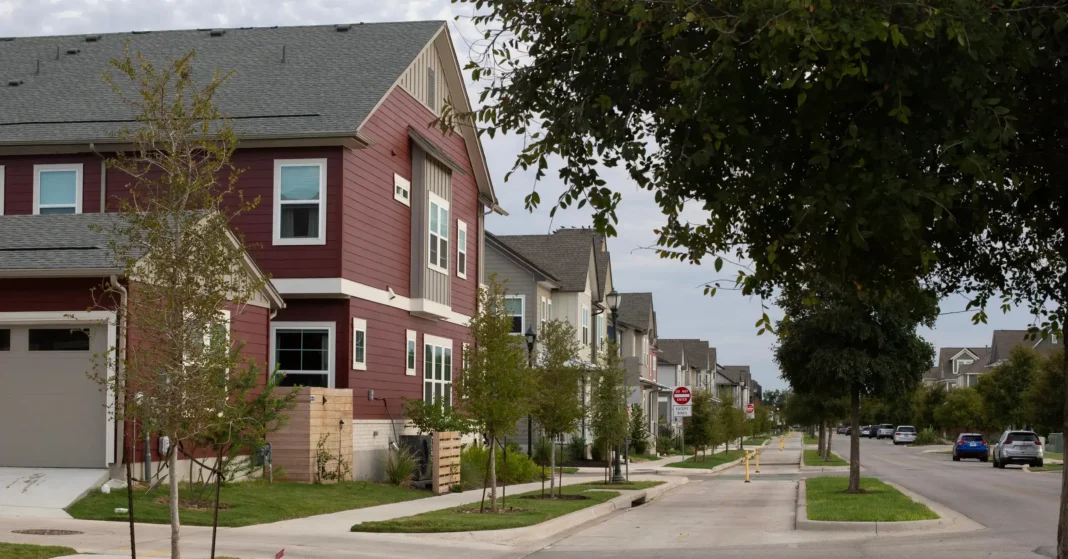Texas homeowners and businesses will get potentially thousands of dollars cut from their property tax bills in the coming years after voters Tuesday overwhelmingly approved a constitutional amendment that changes how public schools are funded.
“Fighting for property tax reform is something Lt. Governor Dan Patrick and I have been doing together for almost 20 years in the making,” the bill’s author, Houston Republican Sen. Paul Bettencourt, said in an emailed statement. “To have all of everyone’s hard work pay off, it’s fantastic to see the public finally getting the property tax reduction they have always wanted and deserved. It’s great to give people their money back from excess budget collections.”
Proposition 4, an $18 billion property tax-cut package, was approved by 84% of voters in Tuesday’s constitutional amendment election, according to Decision Desk HQ. Nearly 1.1 million voted in favor of the amendment, with 89% of estimated votes counted.
The proposition is aimed squarely at lowering school district property taxes, which make up the lion’s share of a Texas landowner’s property tax bill.
Under the proposition, school districts will get $7.1 billion to lower their tax rates by replacing local revenues they would have collected with state dollars, which lawmakers call “compression.” That will reduce the tax rates school districts use to pay for operating costs like teacher salaries by 10.7 cents for every $100 of property value.
The proposition also more than doubles homeowners’ homestead exemption on school district taxes, the amount of a home’s value that can’t be taxed to pay for public schools. The constitutional amendment raises the exemption from $40,000 to $100,000.
Together, those breaks — which will be applied to landowners’ 2023 tax bill — will amount to more than $2,500 in tax savings over the next two years for the typical Texas homeowner, with bigger savings for seniors, according to figures provided by the office of Bettencourt, a Houston-area Republican and the Senate’s chief tax-cut proponent. That comes out to a little more than $100 a month.
Despite Texas’ reputation as a low-tax state, thanks largely to the lack of a state income tax, landowners here pay some of the highest property tax bills in the nation, according to the conservative Tax Foundation. Cutting property taxes has been a top priority for the state’s highest-ranking Republicans.
This year, Republicans got the chance to take a big swing on tax-cuts, promising to use a considerable chunk of a record $33 billion state budget surplus, the result of Texas’ considerable economic growth and a glut of federal COVID-19 relief funds. After months of infighting, GOP lawmakers sent Gov. Greg Abbott the $18 billion tax-cut proposal, but voters still had to sign off on the idea at the ballot box.
The package also includes $5.3 billion to pay for tax cuts approved by lawmakers in previous years.
Voters approved other tax changes as part of Proposition 4 — including a new cap on how much certain businesses’ property values, which helps determine an owner’s tax bill, can grow each year.
Owners of commercial, mineral and residential properties — like rental homes and apartment buildings — that don’t receive a homestead exemption and are valued at less than $5 million now will have a 20% cap on their value growth each year for the next three years. Previously, businesses didn’t have such a cap, unlike homeowners, whose taxable home values can’t rise more than 10% each year under state law.
The cap on certain business properties’ value will expire in 2026 unless lawmakers and voters choose to keep it going.
Proposition 4 also expands the pool of businesses that don’t have to pay the state’s franchise tax. And the amendment allows voters in counties with at least 75,000 residents to pick three new members of their local appraisal districts’ board of directors, which have been appointed positions.
This story originally appeared in the Texas Tribune. To read this article in its original format, click here.








